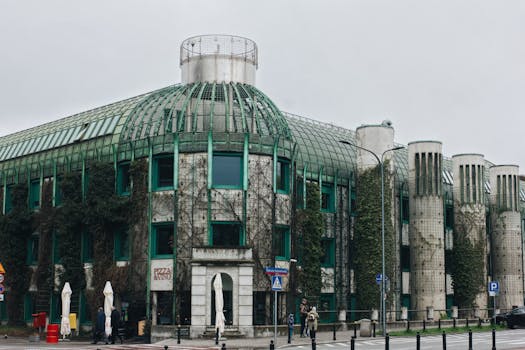
Sustainable Cities: How Europe is Shaping Eco-Friendly Lifestyles by 2025
Sustainable Cities are becoming increasingly important as the world grapples with the challenges of climate change, pollution, and resource depletion. Europe, in particular, has been at the forefront of this movement, with many of its cities implementing innovative solutions to reduce their environmental footprint. In this article, we will explore how Europe is shaping eco-friendly lifestyles and what we can learn from their experience.
Introduction to Sustainable Cities
Sustainable cities are urban areas that have made a commitment to reducing their environmental impact while improving the quality of life for their citizens. This can involve a range of initiatives, from green architecture and renewable energy to sustainable transportation and waste management. By adopting sustainable practices, cities can reduce their carbon footprint, improve air and water quality, and create healthier, more livable environments for their residents.
European Cities Leading the Way
Many European cities are leading the way in sustainable development, with innovative solutions and initiatives that are being replicated around the world. Some examples include:
- Stockholm, Sweden: This city has implemented a range of sustainable initiatives, including a congestion tax, green roofs, and a district heating system that uses waste heat from power plants.
- Copenhagen, Denmark: Copenhagen has set a goal of becoming carbon neutral by 2025 and is investing heavily in green technology, including wind power and biomass energy.
- Barcelona, Spain: This city has implemented a range of sustainable initiatives, including a green transport system, energy-efficient buildings, and a network of parks and green spaces.
Green Technology and Innovation
Europe is also at the forefront of green technology and innovation, with many companies and researchers developing new sustainable solutions. Some examples include:
- Renewable energy: Europe is a leader in renewable energy, with many countries investing heavily in wind, solar, and biomass energy.
- Green architecture: European architects are designing buildings that are not only energy-efficient but also sustainable, using materials such as wood, straw, and recycled materials.
- Sustainable transportation: Many European cities are investing in sustainable transportation systems, including electric and hybrid vehicles, cycling infrastructure, and pedestrian-friendly streets.
Creating Eco-Friendly Lifestyles
Sustainable cities are not just about technology and infrastructure; they are also about creating eco-friendly lifestyles. This can involve a range of initiatives, from education and community engagement to incentives and policies that support sustainable living. Some examples include:
- Eco-friendly housing: Many European cities are promoting eco-friendly housing, including energy-efficient buildings, green roofs, and community gardens.
- Sustainable food systems: European cities are also promoting sustainable food systems, including local food production, community-supported agriculture, and reducing food waste.
- Green spaces: Many European cities are investing in green spaces, including parks, gardens, and green roofs, which provide habitat for wildlife, improve air quality, and mitigate the urban heat island effect.
Conclusion
In conclusion, European cities are leading the way in sustainable development, creating eco-friendly lifestyles and reducing their environmental footprint. By investing in green technology, promoting sustainable living, and creating eco-friendly infrastructure, these cities are providing a model for sustainable urban development that can be replicated around the world. As we look to the future, it is clear that sustainable cities will play a critical role in reducing our environmental impact and creating a healthier, more livable world for all.






